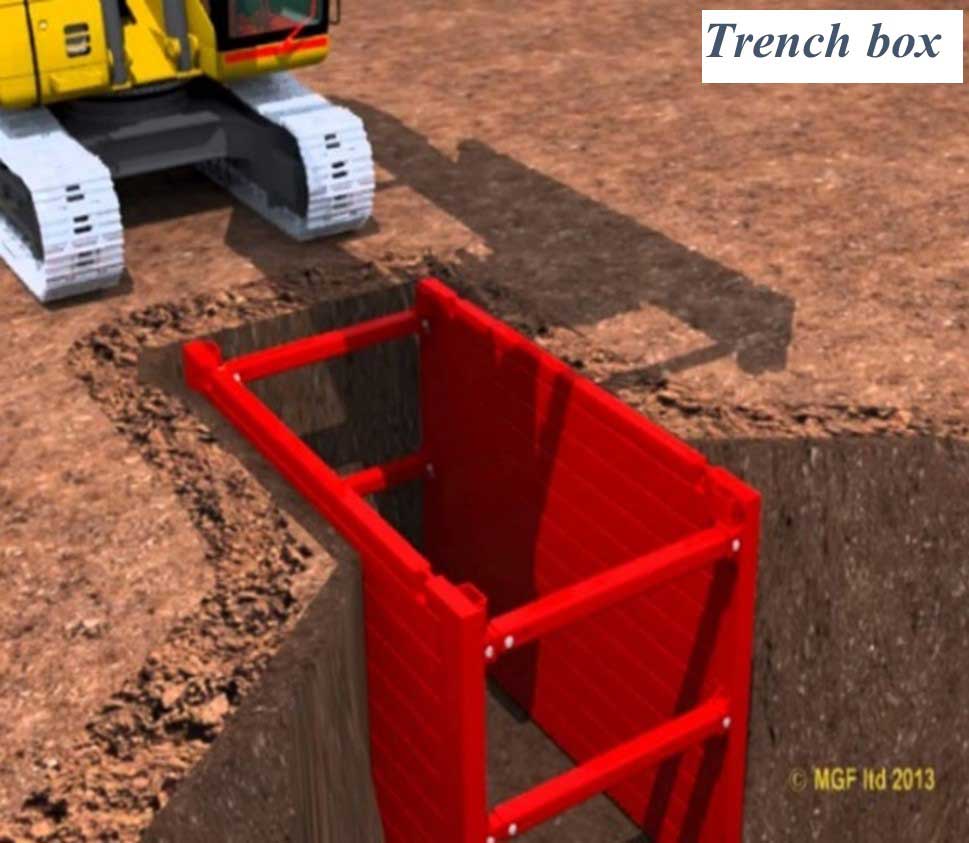Numerous engineering sites and construction projects need trench-digging. They are used to lay telephone lines, pipes or any other type of tubular structure that must be placed deep beneath the ground, such as oil rigs, etc. Trenching in these places can be difficult due the high level of moisture. It is not easy to wash all dirt off objects, but it is also dangerous to expose skin to risk.
Trench boxes are vital for any kind of construction, or repair work that has to be carried out in the ground. They’re also used as protection against collapse, based on the quality of soil and thicknesses that are put in place. Trench boxes being made out of steel or aluminum framing to hold it in place temporarily prior to installation , while excavation is taking place around them then finalizing by fixing grout between two layers to ensure that no cracks form once they’ve been properly placed at site at a level that could expand as time passes due.

Pre Installation
Before digging before you begin digging, it is essential to be aware of the risks that could arise. This includes knowledge of the type of equipment needed and how many people need access to it, and an evaluation of whether there are other ways in which the task could be accomplished without risking life or limb (such low-invasive methods). Pre-excavation surveys must include the full risk assessment needed to ensure that all potential hazards can be easily recognized. This helps to reduce any unexpected problems later on.
It’s also essential to consider the depth of your trench. If you’re working on five feet of width, then support either from sloping or shoring will be needed based on how wide the trench gets. However, if your 20-foot deep hole requires an engineering design upgrade because there aren’t any straight sides close to either end. This means that any structure that is above ground must take into account an increased chance of foundation movement that is directly down into their excavation site.
The trench’s access must be gained via ladders or steps. Access must be within 25 feet of the workers during an emergency. The trench box can be used to test for low oxygen levels, toxic gases or other issues. These articulated devices are simple, but they also increase the risk of stacking them on top of each other because you are not able to predict how high the pile can break into their vulnerable underbelly.
Care The trench should be looked after
1. It is recommended to inspect your trench box and support each day for any damage or movements.
2. Anyone working on the premises must wear protective equipment and wear steel-toed footwear.
3. Heavy equipment and tools should be kept at a minimum of 3 feet away from the edge of any trench.
Extracting
The process of installing a trench box is more likely to be challenging than removing it, as the earth around it moves. Chain slings can be used for extraction or three ways to assist you in this regard, one of which is employing an overhead crane.
1. Straight Pull: This is the most simple of extraction methods. Attach your sling between the two points, then pull it out. You don’t need to use a lot of force or unneeded movements.
2. Half Pull: A half pull is used to attach the trench box on one side , and to lift the box as much as it is possible. This should help you remove all dirt and debris inside without doing any damage to your yard.
3. Single Pull One Chain sling to the lifting/extraction point to lift the trench box. Then lift each panel separately by pulling a single lever. It is possible to remove it using your preferred pull.
For more information, click shoring trench box